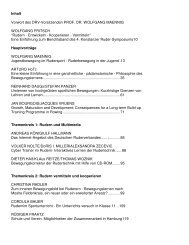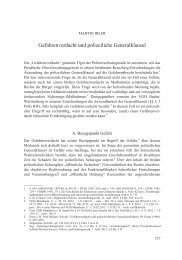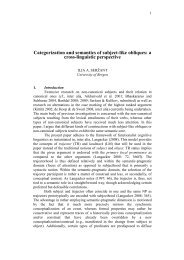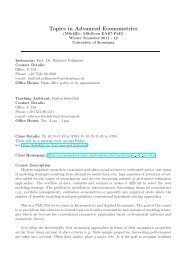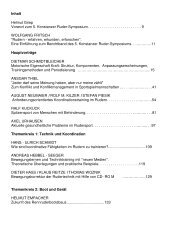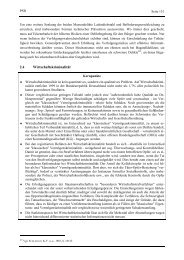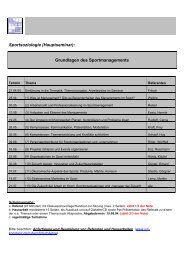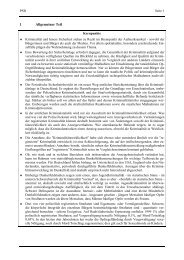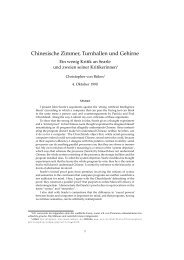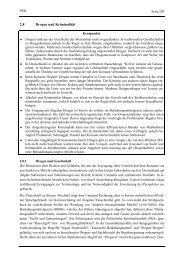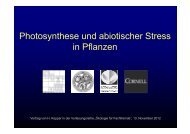Book of Abstracts Book of Abstracts - Universität Konstanz
Book of Abstracts Book of Abstracts - Universität Konstanz
Book of Abstracts Book of Abstracts - Universität Konstanz
You also want an ePaper? Increase the reach of your titles
YUMPU automatically turns print PDFs into web optimized ePapers that Google loves.
A - 32<br />
150<br />
Single Atom Dispersion <strong>of</strong> Platinum on Carbon Nanotubes<br />
Yong-Tae Kim 1 , Kazuyoshi Ohshima 1 , Koichi Higashimine 2 , Kazuo Kato 3 , Tomoya Uruga 3 , Keiichi<br />
Osaka 3 , Kenichi Kato 3,4 , Masaki Takada 3,4 , Hiroyoshi Suematsu 3 , Tadaoki Mitani 1<br />
1 School <strong>of</strong> Materials Science and Center for Nano Materials and Technology, Japan Advanced<br />
2 Institute <strong>of</strong> Science and Technology (JAIST), 1-1 Asahidai, Tatsunokuchi, Ishikawa 923-1292, Japan<br />
3 Japan Synchrotron Radiation Research Institute (JASRI)/SPring-8, 1-1-1 Kouto, Mikazuki,<br />
Hyogo 679-5198, Japan<br />
4 Core Research for Evolutional Science and Technology, Japan Science Technology Cooperation<br />
(CREST/JST), 4-1-8 Honcho, Kawaguchi, Saitama 332-0012, Japan<br />
Electrocatalyst is the key factor to determine the performance <strong>of</strong> fuel cell. Generally, it is<br />
prepared by the supporting electrocatalytical active material such as platinum on carbon<br />
materials in order to elevate an activity and reduce the usage <strong>of</strong> novel metal. Carbon supports<br />
therefore affect largely the properties <strong>of</strong> electrocatalyst such as dispersity, size distribution,<br />
particle shape and intrinsic conductivity. Since the discovery <strong>of</strong> carbon nanotubes (CNT) in<br />
1991 by Iijima 1 , the application to electrocatalyst supports has been attempted in order to utilize<br />
their superior properties such as good intrinsic conductivity, adequate specific surface area,<br />
accessible surface texture and electrochemical stability. However, there have been also a<br />
limitation that it is difficult to disperse highly and uniformly electrocatalytical active material on<br />
CNT, because they have the inert and plane surface which is difficult to wet in precursor<br />
solution and easy to cause the agglomeration 2 . In order to solve this problem, we adopted the<br />
introduction <strong>of</strong> thiol groups known to be the functional groups having a good affinity to novel<br />
metal on CNT surfaces. It was expected that high dispersity could be obtained by preventing the<br />
agglomeration among Pt clusters, since surface thiol groups formed the strong bonding with Pt<br />
clusters.<br />
Surprisingly, it was revealed that the surface <strong>of</strong> thiolated carbon nanotubes was covered with the<br />
mono-layer <strong>of</strong> single platinum atoms bonded with the surface thiol groups over our expectation.<br />
This phenomenon was confirmed with several analysis tools, such as X-ray Absorption Fine<br />
Structure analysis (EXAFS, XANES), X-Ray Diffractometry (XRD) with synchrotron radiation<br />
<strong>of</strong> SPring-8, X-ray Photoemission Spectrometry (XPS) and Transmission Electron Microscopy<br />
(TEM).<br />
Here we report the single atom dispersion as the extreme dispersed state <strong>of</strong> metal and the<br />
possibility to control the cluster size uniformly from single atom.<br />
References<br />
O<br />
Pt<br />
S<br />
NH<br />
C<br />
O<br />
Pt<br />
S<br />
NH<br />
C<br />
Figure 1. Schematic diagram <strong>of</strong> single Pt atom dispersion on CNT.<br />
[1] S. Iijima, Nature 354, 56 (1991).<br />
[2] E. Dujardin, T. W. Ebbesen, H. Hiura, K. Tanigaki, Science 265, 1850 (1994).<br />
O<br />
Pt<br />
S<br />
NH<br />
C<br />
O<br />
Pt<br />
S<br />
NH<br />
C<br />
O<br />
Pt<br />
S<br />
NH<br />
C




